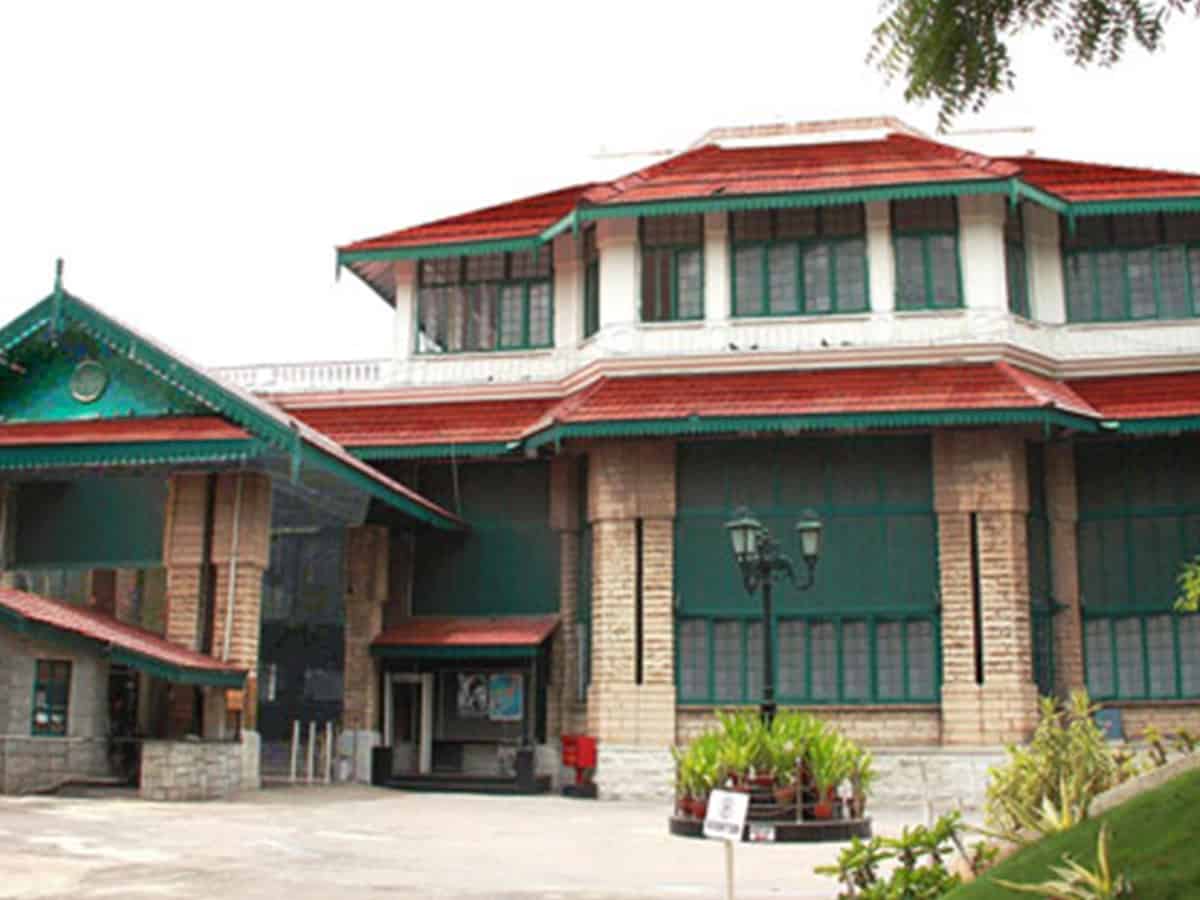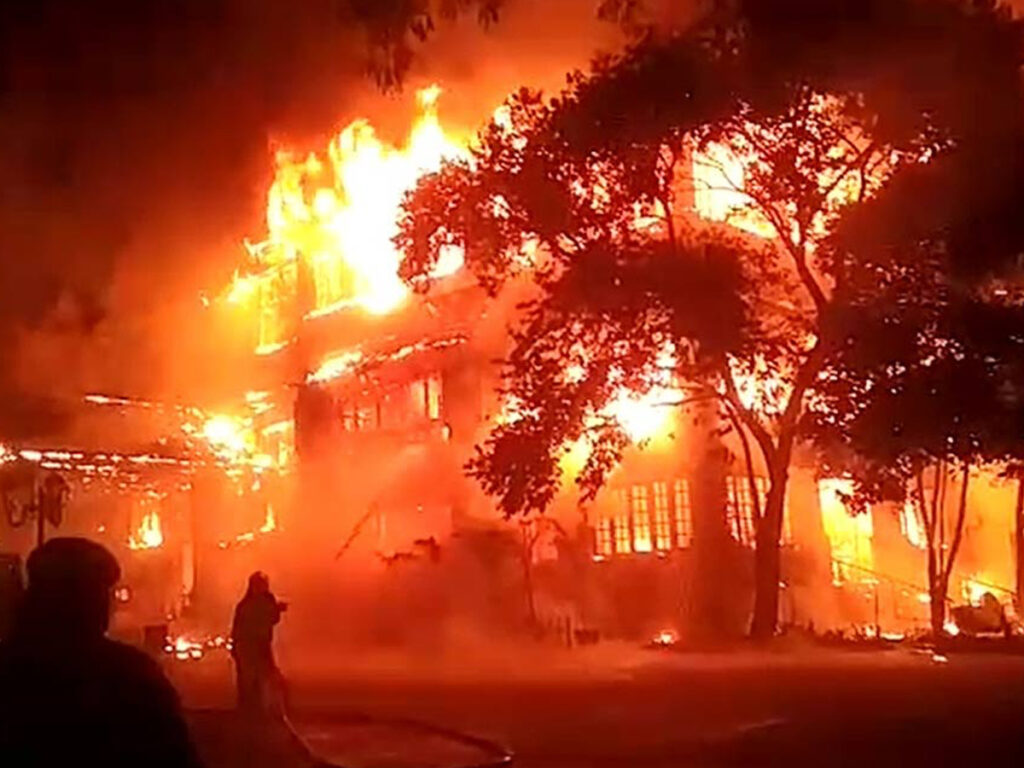

The euphoria of Sankranti which had lingered on due to the weekend was rudely shattered with the sobering news of Hyderabad losing one of its iconic heritage structures to a devastating fire. The conflagration at the Secunderabad Club consumed the oldest club of the city which ranked among the finest in the country. Those who were not numbed into silence voiced their feelings in myriad expressions which ranged from shock and consternation to livid outrage. There is a general feeling among the citizens that the magnitude of loss could have been minimized.
The Secunderabad Club is one of the most important heritage structures of the twin-cities in terms of retention of original character and setting. It has withstood the passage of time well and continues to exude an old-world charm despite major socio-cultural changes which were introduced to make the place conform to modern day sensibilities. While other clubs in the city have seen a steady deterioration in standards, the Secunderabad Club succeeded remarkably in ensuring that rules concerning propriety of dress and behavior were adhered to meticulously by members and guest. An old timer recalls an incident from the 1960s when the famous Bollywood actor Shammi Kapoor was shooed off the dance floor by a club steward for not being dressed appropriately.

The parts of the club gutted by the blaze were unfortunately the historic core of the club complex. Although there are varied narratives regarding the original ownership of the building, experts have dated the structure to around the last quarter of the nineteenth century. According to oral histories that have persisted despite contrary claims, the building belonged to Sir Salar Jung I, the renowned Prime Minister of the Nizams. It is said to have been a hunting lodge but its location in close proximity to the British cantonment gives credence to the claim that it served as a discreet meeting place for the Divan and his English admirers. Away from the scrutiny of the rest of Hyderabad’s nobility, Salar Jung could conduct affairs of state in relative comfort. His visit to Europe in 1876 may have impressed upon Salar Jung the importance of elite clubs in British society and as the premises of the ‘United Services Club’ were considered unfit to receive the Resident, he was quick to offer his own estate for use of high ranking British military and civilian officials of Hyderabad and Secunderabad.
Historical accounts state that the club, which had been founded on 26th April 1878, was initially housed in a modest building near Tivoli Cinema. The institution, which was renamed in 1903 as the Secunderabad Club, is located on land which originally belonged to one. Samuel France. The property changed hands a number of times before being acquired by Sir Salar Jung who not only paid for the land but also bore the expenses of extensive renovations to suit the needs of the club. The fact that Salar Jung’s bust appears to be the sole artefact to have survived the blaze should be sufficient impetus for the Club to restore the structure to its original glory.
The British had made a fine art of fleecing the Nizam. Not content with making Hyderabad pay for the subsidiary force, they passed on every expense including that which was incurred on leisure and pastime on to their ever obliging ‘hosts’. Exaggerated claims, in terms of the number of personnel serving with the Subsidiary Force, their inflated salaries and miscellaneous expenditure, had brought Hyderabad to the brink of financial disaster. The British are said to have jested about the state of affairs by coining a derogatory phrase that ‘Poor Nizzy pays!’. By the time of Salar Jung, they had sucked the state dry and appear to have started targeting the nobility of Hyderabad to subsidise their extravagant lifestyle.
The debate about the property being either donated by Salar Jung or paid for by him is one of pure academic interest. Either way, the British in no way contributed financially towards establishing the Secunderabad Club. It was an endeavor fully funded by Hyderabad, as were almost all other structures in the cantonment including significant buildings including the British Residencies at Bolarum and Kothi. It is thus understandable that it is not merely Club Members and Heritage Enthusiasts but a large number of inhabitants of the Twin-Cities who grieve the loss of another precious asset of our already beleaguered heritage.
A lot is being written about the incident with a growing number who support complete restoration. Unfortunately, the artefacts and memorabilia which perished in the fire cannot be resurrected to ensure a comprehensive restoration of the ambience. However, recreating or restoring the structure should pose no problem at all as there is bound to be ample data available with conservation architects who have worked on earlier projects of restoration. There is also an abundance of archival images and an appeal to members should bring in thousands of photographs taken in the recent past. It is also important to recall that while conferring an award in 1999, the jury for the INTACH Hyderabad Heritage Awards had commented that the Secunderabad Club is one of the most impressive buildings of the city and a shining example of how a heritage building can and should be maintained.
There are already whispers doing the rounds that some members of the Club are of the view that the heritage structure should be razed and a swanky state of the art facility constructed in its place. If that happens, the stately and dignified environs of the grand old club may end up looking like an early nineteenth century European bordello. Ensuring that the heritage feel, a hallmark of established clubs, is essential. The onus rests primarily with the members and a majority of them will hopefully ensure that the club’s glorious past is resurrected for future generations to cherish.
Sajjad Shahid is a nationally known heritage activist based in Hyderabad.



